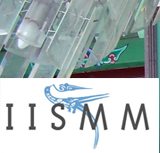En partenariat avec le Netherlands InterUniversity School for Islamic Studies (NISIS), le Centre Jacques Berque (Maroc) et l’Institut néerlandais au Maroc (NIMAR), l’Institut d’étude de l’Islam et des sociétés du monde musulman lance un appel à participation pour sa prochaine sessions de formation doctorale qui aura lieu à Rabat de 23 au 27 mars 2015, sur le thème « Thinking about things: Images, objects, collections ».
En partenariat avec le Netherlands InterUniversity School for Islamic Studies (NISIS), le Centre Jacques Berque (Maroc) et l’Institut néerlandais au Maroc (NIMAR)
Textuality and orality form the classical regimes of enquiry and evidence through which knowledge in the social sciences and humanities has been and is being primarily established and debated. At the core of the endeavour lies a confidence in language-based interpretation or discourse analysis as the best means to reveal social structures, norms and phenomena. Middle Eastern studies are no exception. Collecting manuscripts and epigraphy, and any written piece for that matter on the one hand, recording people’s words and speech on the other, have long kept historians and anthropologists busy. The hunt itself has a rich history of its own, if one only partially written, that bonds purchasers to providers. Since the material and visual turn of the past decades, the range of sources used by social scientists has expanded; images and objects now routinely feature in academic writing.
While Islam is commonly associated to aniconism, figurative iconography abounds in the Muslim world, in the public as well as in the private sphere. Rebel Arab-spring graffiti have recently attracted much attention. Propaganda and advertisement have long used visuality to communicate meaning. National schools of painting are century-old, if not centuries-old (e.g. Qajar art), in large parts of the region. Landscapes, still-lifes, portraits – occasionally nudes – adorn today many an interior. The reuse of Orientalist imagery is itself an old tradition, and one on the verge of becoming an industry. The production and reception of figurative art – or of abstraction for that matter – reveal expanding “art worlds” as well as patterns of consumption and taste that are worth scholarly attention, as they offer views on society (i.e. the popularization of “kitsch”) unvoiced in writing or discourse. Topic and audience of photography and cinematography provide similar possibilities for research.
While semiologists argue that images can be read as “texts”, it is widely accepted that non-textual sources can be ambiguous and moreover polysemous. Objects may be more equivocal than images. Commodities have been used since long by archaeologists to establish chronologies or to map trade routes, but they are not always easily “legible”. Luxurious artefacts produced for trade or donated as gifts supposedly testify of flourishing economies and are meant to convey distinction or superiority, but their performativity cannot be simply measured. Manufactured goods allegedly embody unique information about the place and time, culture and people that produced them – when they have remained in situ or when their origins can be traced back to specific periods and locations. But things do move, whether they are forcedly displaced and decontextualized (e.g. under colonization), or they translocate freely (e.g. within globalization); they may acquire new significance in the process.
Just as “provenance” has transformed art historical writing by shifting the focus from authorship to ownership of an artwork, the “social life of things” opens up myriad new ways of looking at realia. One is to consider them as items passing from one person to another, from one group to another, from one culture to another. The biography of artefacts may be ascertained with more ease than their power. In many instances, their translocation operates within the framework of intentional assemblages of individual pieces. These collections in turn add new layers of meaning to the objects they encompass, and possess their own trajectories, whether they are made of rare books, curios, artworks, historical papers or museum exhibits. The changing labels – the metadata in digital jargon –of collectibles overtime is good testimony of the transformation in identity and perception they can undergo.
In short, this Spring school invites to reflect on the place of images, objects, collections in current scholarship on the past and present Muslim world through specific case studies. Among the questions to be addressed are the methods to get inanimate things to “speak” and the additional value, if any, gained by image- or object-based research.
Déroulement de la session
Des exposés magistraux seront prolongés par des séances de discussion et des ateliers de travail autour des recherches doctorales des étudiants qui participent à la session. Les débats et les interventions se dérouleront en anglais. La participation exige une bonne compréhension de l’anglais, ainsi qu’une véritable capacité à s’exprimer dans cette langue.
Participants
Une dizaine d’étudiants inscrits dans les formations doctorales en France seront sélectionnés par l’IISMM.
Procédure de sélection des doctorants
Sélection par un jury sur la base d’une lettre de motivation adressée par les candidats (1 à 2 pages maximum), d’un CV, d’un résumé de la thèse, d’une proposition d’intervention (2 pages maximum) et d’une lettre de recommandation du directeur de thèse. Les candidats retenus s’engagent à assister à la totalité de la session. Leurs frais de mission étant pris en charge, ils s’engagent également à respecter les dates de départ et de retour qu’implique la session.
Date limite de réception des candidatures : 10 janvier 2015
par poste (IISMM, 96 bd Raspail, 75006 Paris) ou par mail (direction.iismm(ârôbase)ehess.fr)
Dates du colloque : Arrivée le 22 mars 2015, départ le 28 mars 2015 (23-27 mars 2015)
Responsables scientifiques
- Mercedes Volait
Directeur de recherche au CNRS
Directeur d’InVisu, INHA, Paris
Institut d’études de l’Islam et des Sociétés du Monde musulman
Mercedes.volait(ârôbase)inha.fr - Léon Buskens
Chair for Law and Culture in Muslim Societies
Director InterUniversity School for Islamic Studies
L.P.H.M.Buskens(ârôbase)hum.leidenuniv.nl - Baudouin Dupret
Directeur de recherche au CNRS
Directeur, Centre Jacques Berque (Maroc)
baudouin.dupret(ârôbase)cjb.ma
URL de référence : http://calenda.org/308189


Leave a Reply
You must be logged in to post a comment.